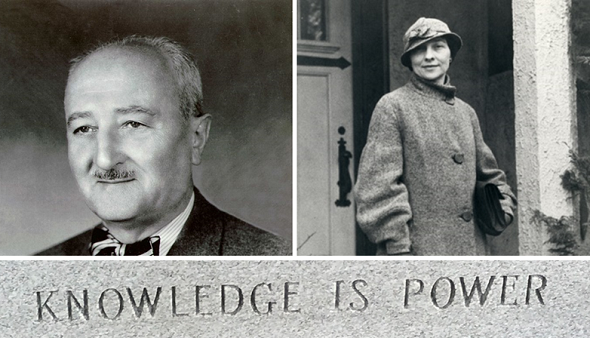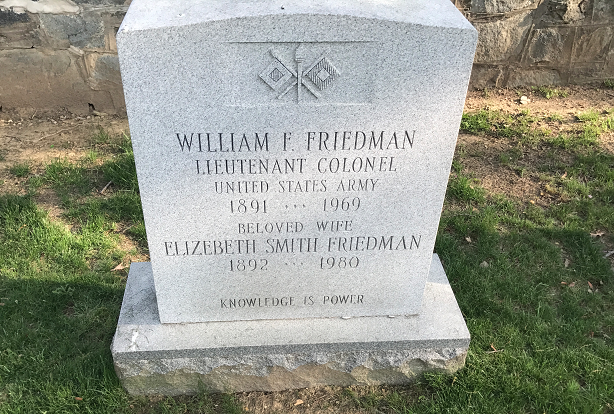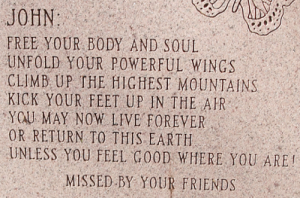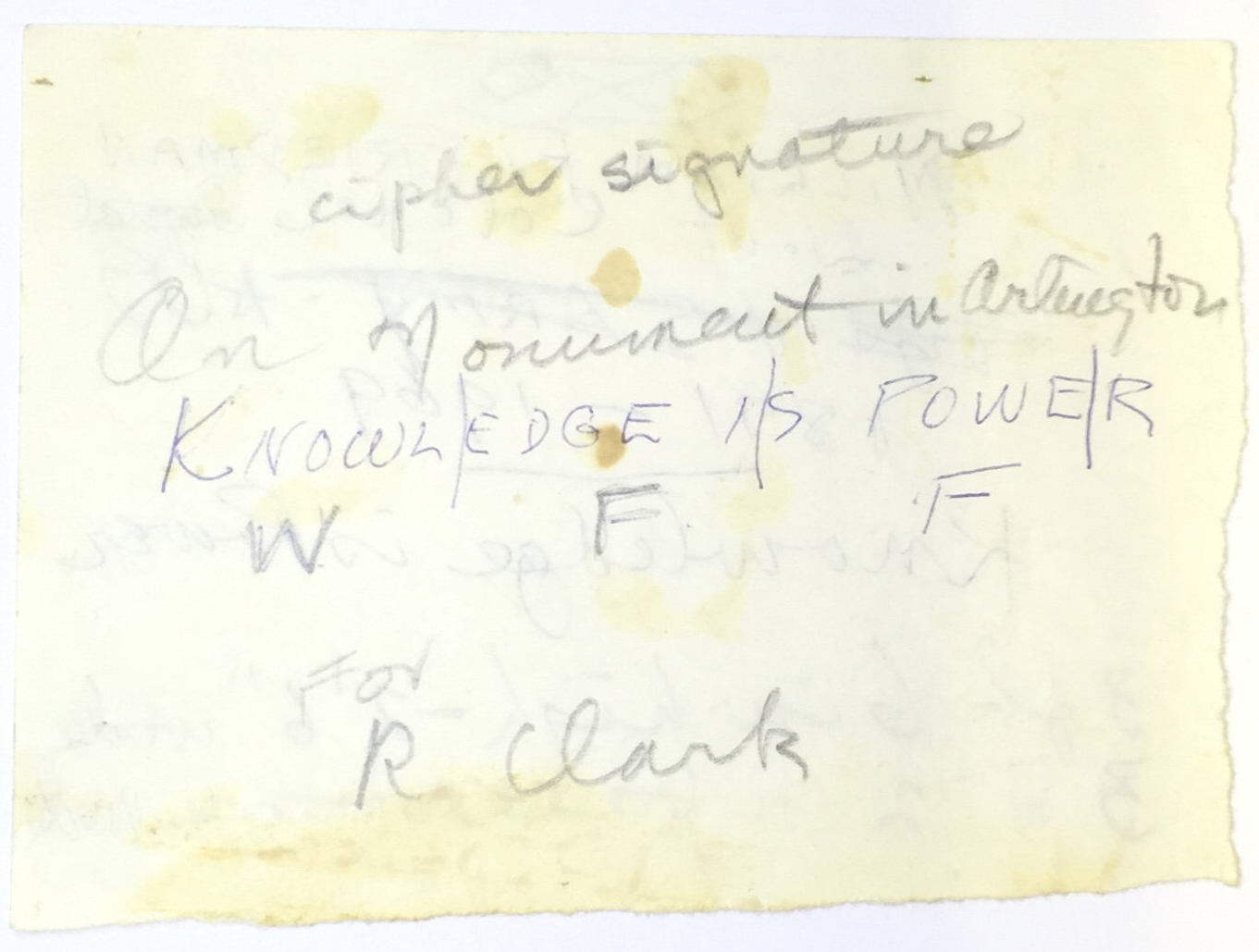Crypto expert Elonka Dunin has discovered a steganographic message on the tombstone of William and Elizebeth Friedman.
William Friedman (1891-1969) is considered the most successful codebreaker in history. In his long career he broke over 1000 ciphers, including the Kryha cryptograph, Edward Hebern’s rotor machine, and the Japanese Purple. William Friedman’s wife Elizebeth (1892-1980) was a notable codebreaker, too. Among other things, she solved numerous smuggler codes in the prohibition time.
The Friedman’s also had an interest in crypto puzzles and crypto mysteries. They examined the Voynich manuscript and published a critical book about the Shakespeare Bacon code debate. Their Christmas cards often contained funny crypto challenges, as can be seen in a blog post I published last December. In another post I introduced a few steganographic codes William Friedman created, for instance, a message hidden in a picture showing a castle.
The Friedman’s tombstone
William Friedman passed away in 1969, leaving Elizebeth to design his tombstone. She placed a pair of crossed flags at the top, then his name and the dates, a space for her own name, and then at the very bottom, a simple inscription, “Knowledge Is Power” (thanks to Elonka for letting me use the photograph).
Crypto enthusiasts might be a little disappointed that the Friedman’s don’t have an encrypted inscription on their tombstone. After all, encrypted grave inscriptions are not uncommon. On Klausis Krypto Kolumne I have covered quite a few of them. For instance, there are two Masonic tombstone ciphers in New York, one near Manchester, one in Ohio and another one in Newcastle. There are puzzle tombstones in Monmoth, UK, and Wellesly, Canada and, not to forget, the famous F*** YOU grave in Canada (to get the hidden message you need to read the first letter of each line only).
Yesterday Tobias Schrödel drew my attention to a new publication of US cipher expert Elonka Dunin. Elonka, whom I have met many times at crypto conferences in the USA and Europe, has discovered something very interesting. She has found a hidden message on the Friedman’s tombstone. This message has been unknown for over four decades.
The Bacon cipher
According to Elonka’s article, the message on the tombstone is coded in the Bacon cipher. This is not surprising, as William Friedman used this method in some of the cryptographic puzzles he created (e.g., the message in the castle picture is encoded this way). The Bacon cipher can be used to hide a message in an arbitrary text or picture (“anything can be made to signify anything”). In order to use it with a text, we need two different typesets (“a type” and “b type”). In the following I will use ordinary letters as type a and italic bold letters as type b. With these two types we can encode all letters of the alphabet (Bacon used a 25 letter alphabet) as follows:
A: SONNE B : SONNE C: SONNE D: SONNE
E: SONNE F : SONNE G: SONNE H: SONNE
I: SONNE K : SONNE L: SONNE M: SONNE
N: SONNE O : SONNE P: SONNE Q: SONNE
R: SONNE S : SONNE T: SONNE U: SONNE
W: SONNE X : SONNE Y: SONNE Z: SONNE
With the Bacon cipher the word CRYPTOLOG is coded as follows: “This is an ordinary Text containing a hidden message!”
The Bacon cipher is one of the earliest binary codes in history, predating the Morse code by over 300 years and the ASCII code by over 400 years. Here’s an English version of Bacon’s book chapter about it.
The hidden message on the tombstone
Elonka found the Bacon message in the words “Knowlege is Power”.
On a closer look, different fonts are used here. Some letters have serifs, some do not. For example, look at the capital E’s. If we write each letter that is with serif in italic bold letters, we get the following:
KNOWL EDGEI SPOWE R
This encodes the following three letters: WFF. These are the initials of William Frederick Friedman. I admit, this is not the most interesting message in the world, but it is a nice dalliance and very typical for the Friedman’s.
Some may quibble as to whether the Os in the message were serifed or not. However, Jason Fagone, in his research in the Marshall Library where the Friedmans’ papers are stored, found a note from Elizebeth to William’s 1977 biographer R. Clark, that “WFF” was indeed the intended plaintext.
Jason Fagone, whom I met at the last Crypto History Symposium, is currently writing an Elizebeth Friedman biography titled The Woman Who Smashed Codes. Its publication is scheduled for August 2017. I can hardly wait.
Congratulations to Elonka on this great finding! The history of encrypted tombstones has to be re-written.
Follow @KlausSchmeh
Further reading: Ten peculiar uses of the pigpen cipher
Linkedin: https://www.linkedin.com/groups/13501820
Facebook: https://www.facebook.com/groups/763282653806483/








Kommentare (6)